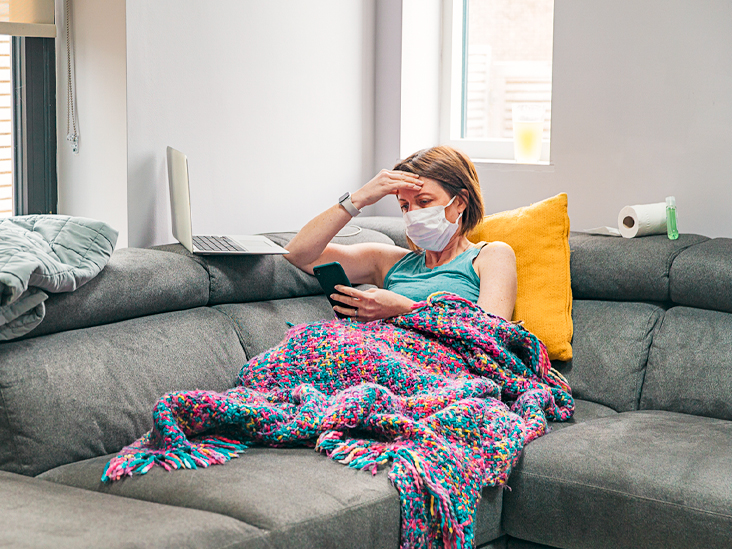With fewer hospital beds available, how can people in Japan recover at home with COVID?

Coronavirus infections continue to spread in Japan, and the number of people recovering at home with the virus has surged past 260,000. While the omicron variant is said to present a lower risk of producing serious COVID-19 symptoms compared to other variants, it is highly infectious and has created difficulties for transmission prevention measures. So what should people be careful of when recovering from the virus at home?
Omicron infections primarily occur in the upper respiratory tract, making it difficult for individuals who contract it to develop serious pneumonia or other conditions, and presenting a lower risk of heavy symptoms compared with delta and other earlier variants. Analysis of 390 suspected omicron infections in Hiroshima Prefecture between Dec. 22, 2021, and Jan. 5 this year showed that around 70% of people recorded a fever of 37.5 degrees Celsius or higher. Compared to the fifth wave of infections fueled by the delta variant in the summer of 2021, a striking number of people had sore throats, runny noses, and muscle pain.
With the omicron variant’s precipitous spread, the national government has in a bid to lessen the burden on medical institutions switched measures from requiring all infected people to be hospitalized to a policy in which people are as a general rule required to recover at home or at accommodation facilities.
On Jan. 24, Minister of Health, Labor, and Welfare Shigeyuki Goto outlined a new diagnosis policy for areas where more time is needed for consultations and tests due to the spread of infections. Under the policy, close contacts of infected people including family members living with them can be diagnosed with COVID-19 by a doctor without a test if they present fever or other symptoms.
Doctor Eiji Kusumi at the Navitas Clinic Shinjuku in Tokyo told the Mainichi Shimbun, “If someone who seldom catches colds feels like they’ve got one, it’s reasonable to presume it’s the coronavirus.” For many people, even if they do develop a fever, its peak appears to pass in two to three days. Kusumi advised people to feel secure while focusing on recovery, saying, “For people under 50, coronavirus cases leading to severe symptoms or death are extremely rare. With the omicron variant, the rate of cases becoming severe is even lower.”
People recovering at home have been able to take molnupiravir, an oral medication for coronavirus patients that was the first of its kind to be approved in Japan in December 2021. But eligibility is limited to those aged over 60, or individuals with medium or mild COVID-19 symptoms who are 18 or older and have a greater risk of developing severe symptoms due to preexisting conditions or having a body mass index (BMI) of 30 or more. The medication has to be taken within five days of symptoms arising, but with the recent surge in infections, antibody kits are in short supply and people have had to wait two days or longer for PCR test results, giving them a late start. As a result, there has reportedly been a rise in cases where the five-day time limit is looming by the time they receive the medicine.
People ineligible for molnupiravir can receive antipyretic analgesics from medical institutions. Kusumi said, “If the throat pain is strong and people can’t take in food or water it will lead them to become dehydrated, which will worsen their health. Over-the-counter antipyretic analgesics are fine, so people should make thorough use of them, and ensure they stay hydrated. There are also cases where more effective medication can be prescribed through online medical consultations and other services.”
Home recoveries were unavoidable when Japan’s medical system was overwhelmed during the fifth wave of coronavirus cases in summer 2021, and as a result, there were patients who died after their conditions took a sudden turn for the worse.
The criteria for calling an ambulance are: breathing trouble even when resting; a heavy feeling in half the body and difficulties mustering strength; inability to easily move one’s limbs; going in and out of consciousness; and the presence of pain the person has not experienced before.
One concern when recovering at home is viral transmission within the household. Data from Denmark has shown that among households where infections have emerged, the omicron variant has passed on to parents and other family members in 31% of cases, outstripping the 21% seen with delta.
Professor Nobuaki Shimizu, a specialist in infection control science at Aichi Prefectural University, said, “If it’s a case where symptoms do not emerge (within a family), then it would be best to continue for about a week with countermeasures including ventilating the rooms as much as possible, wearing nonwoven masks and separating bedrooms.
























